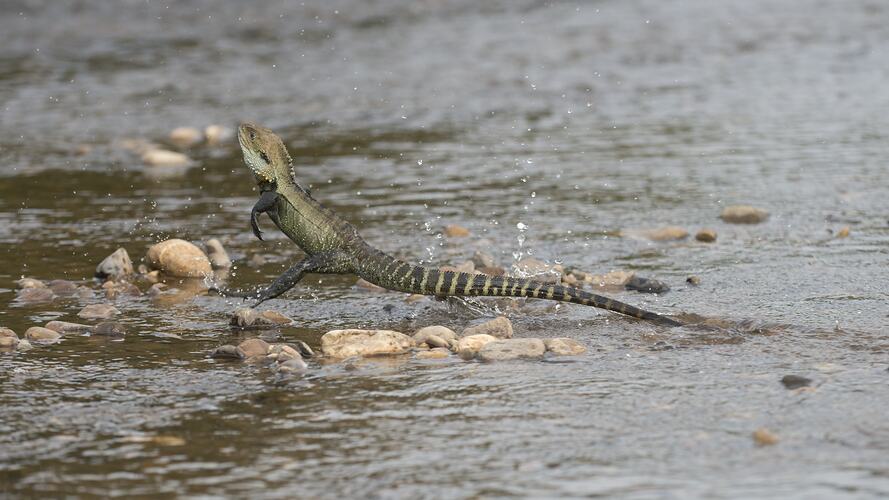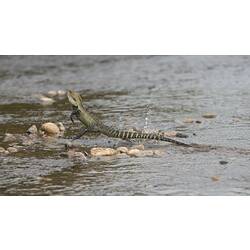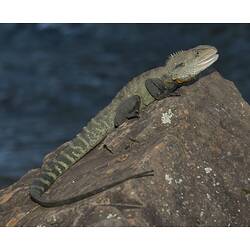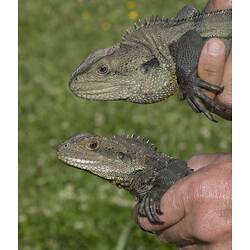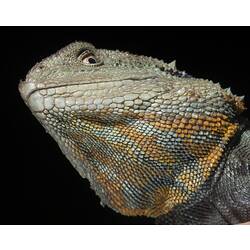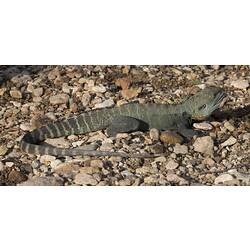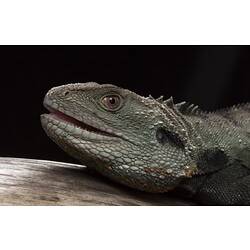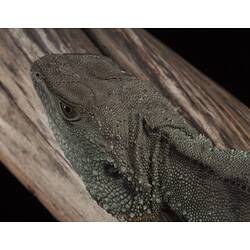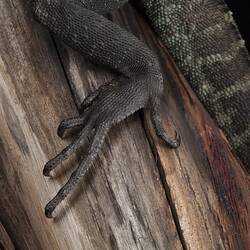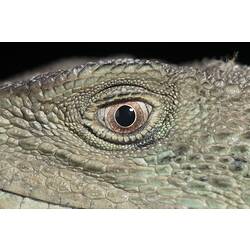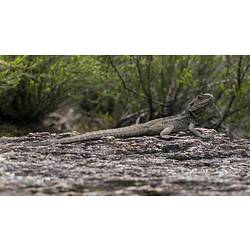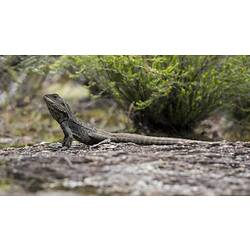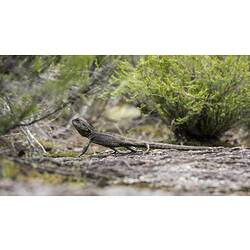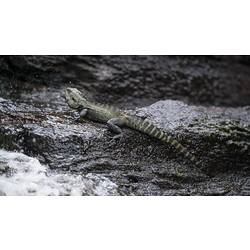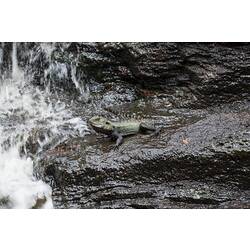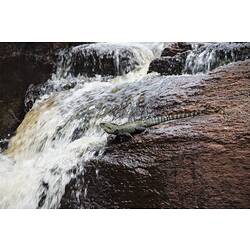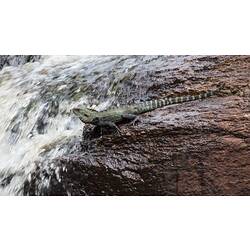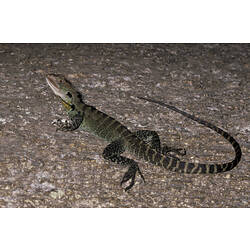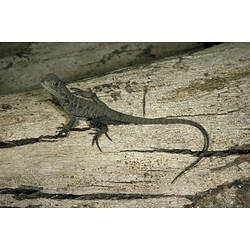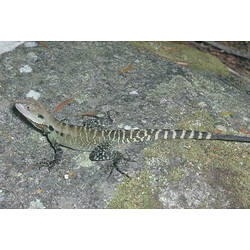General Description
Line of ridged scales along the back. Tail laterally compressed; neck with a distinct crest. Up to 25 cm long (snout-vent).
Biology
Eastern Water Dragons are active during the day, feeding on a range of plants and animals. They are often observed perched on fallen trees, logs or rocks beside flowing water. When startled, they will dive into the water where they can remain submerged for up to an hour. Females lay a clutch of 6-17 eggs.
Distribution
Eastern mainland Australia.
Habitat
Around logs and fallen branches.
More Information
-
Animal Type
-
Animal SubType
-
Brief Id
A large lizard with a long tail and spines along the back. Found in or near rivers and waterways.
-
Colours
Black, Grey, Green
-
Maximum Size
60 cm
-
Habitats
-
Diet
Omnivore
-
Endemicity
-
Conservation Statuses
CITES: Not listed, FFG Threatened List: Not listed, EPBC Act 1999: Not listed, IUCN Red List: Least Concern
-
Taxon Name
-
Scientific Author
(Gray, 1831)
-
Common Name
Australian Water Dragon
-
Other Names
Water Dragon
-
Kingdom
-
Phylum
-
Subphylum
-
Class
-
Subclass
-
Order
-
Suborder
-
Infraorder
-
Family
-
Genus
-
Species Name
lesueurii
